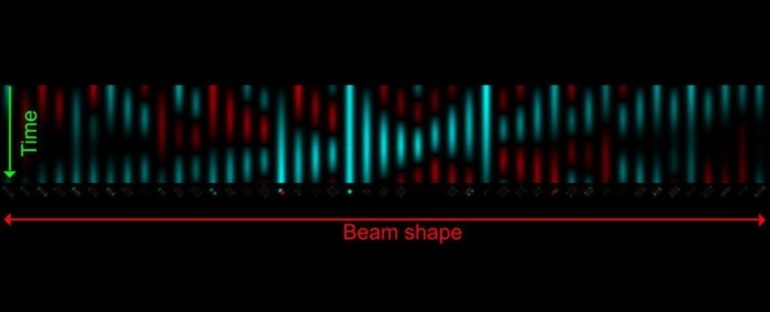Like watching a movie in reverse, physicists have just demonstrated a new technique for the time-reversal of a wave of optical light.
That doesn’t mean that they have actually reversed the flow of time; rather, they have found a way to induce an optical wave to retrace a forward path in reverse, returning to its point of origin.
It’s the first time that time reversal of optical waves has been achieved with full control over all of the degrees of freedom of light simultaneously.
This would be a massive achievement in and of itself, but the high degree of spatiotemporal control required has implications for applications such as imaging, nonlinear optics, and micromanipulation.
The time reversal of waves occurs when a wave, having propagated through a medium, is re-emitted in such a way from the other side that it precisely retraces its path back to the source. The two paths are mathematically exactly the same, except for the direction of time.
This has been achieved with low-frequency waves, such as acoustic waves, water waves and, on the electromagnetic spectrum, microwaves. Physicists have also previously achieved partial spatiotemporal control of optical waves; but the much higher frequencies of optical waves are harder to measure, and therefore to control.
This is what makes the work of physicists from the University of Queensland (UQ) in Australia and Nokia Bell Labs so remarkable.
“Imagine launching a short pulse of light from a tiny spot through some scattering material, like fog,” explains UQ physicist Mickael Mounaix.
“The light starts at a single location in space and at a single point in time but becomes scattered as it travels through the fog and arrives on the other side at many different locations at many different times. We have found a way to precisely measure where all that scattered light arrives and at what times, then create a ‘backwards’ version of that light, and send it back through the fog.”
This re-emitted light retraces the original scattering process to arrive back at the single point, from which the first beam was emitted, at a single point in time.
The team’s device consists of a pulse shaper, for manipulating the shape of laser pulses, and multi-plane light conversion, which allows the team to spatially transform light.
In this way, the researchers could control the light in two spatial degrees – amplitude and phase – as well as one temporal degree as it travelled through optical fibre.
The resulting time-reversed wave can, the researchers say, be compared to a random-looking cloud of light.
“To create that light cloud, you need to take an initial ball of light flying into the system, and then sculpt it into the 3D structure you want,” says UQ physicist Joel Carpenter.
“That sculpting needs to take place on time scales of trillionths of a second, so that’s too fast to sculpt using any moving parts or electrical signals – think of it like shooting a ball of clay at high speed through a static apparatus with no moving parts, which slices up the ball, diverts the pieces, and then recombines the pieces to produce an output sculpture, all as the clay flies through without ever slowing down.”
(Mounaix et al., Nature Communications, 2020)
The exceptional control achieved by the team can be seen in a series of images. They tuned the device so that, at the distal end, the light formed shapes, such as the letters of the alphabet, or a smiley face.
While the images are cute, they’re also of intense interest: this level of control can allow a wave to be focused on an area that might be impossible to reach using traditional means. The medium itself can be used to focus re-scattered light.
“This new type of control in optics,” the researchers write in their paper, “could open up many possibilities that are not just generalisations of previous demonstrations for lower frequency phenomena, with applications such as nonlinear microscopy, micromachining, quantum optics, optical trapping, nanophotonics and plasmonics, optical amplification, and other new nonlinear spatiotemporal phenomena, interactions and sources.”
The research has been published in Nature Communications.



